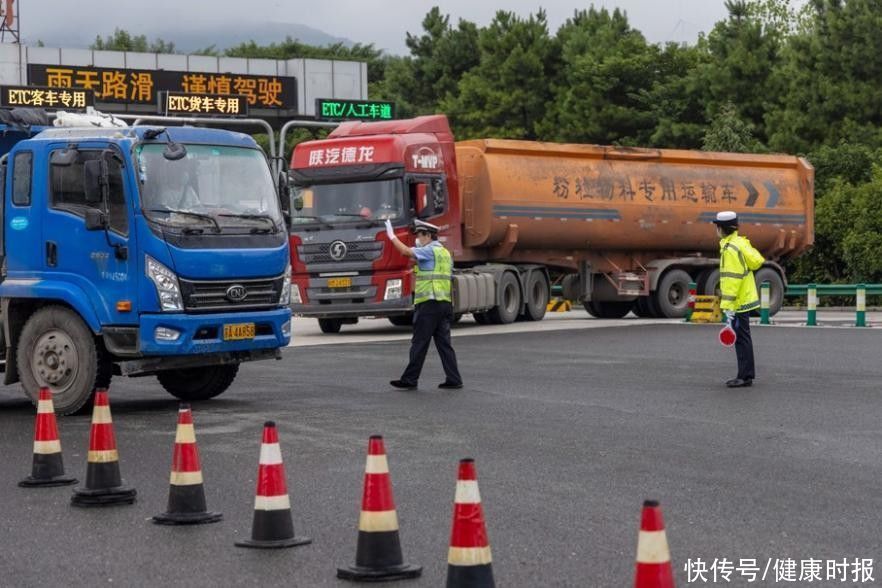People’s Daily Health Client Wang Yuan
On June 14, “the baby with intestinal obstruction died after being sent to the cabin due to fever” attracted the attention of netizens, and quickly became a hot search on Weibo. A woman from Shijiazhuang, Hebei revealed that she sent her child with intestinal obstruction to the Second Affiliated Hospital of Hebei Medical University a year ago. Until the baby was in shock with feces pouring out of her nose and mouth, the doctor refused to transfer the child on the grounds that there was no nucleic acid report. He was admitted to the pediatric intensive care unit for rescue, which was delayed for several hours, and finally died after the rescue failed.
On June 11, the Office of the State Council’s Leading Group for Logistics Guarantee and Smoothness issued a warning notice that there are epidemic prevention checkpoints at some expressways in Zhangjiakou, Hebei, Anqing, Hefei, Shaanxi, Shangluo and other places< /span>Problems such as excessive control and repeated nucleic acid testing for epidemic prevention and control.
For simplistic, one-size-fits-all, and “layer-by-layer” measures like the above, the State Council’s “A Package of Policy Measures to Consolidate and Stabilize the Economy”, the State Council Documents such as the joint prevention and control mechanism “Nine Prohibitions” policy, the “Notice on Doing a Good Job in the Prevention and Control of Epidemic Prevention and Control of National College Students Leaving Schools and Returning Home” and other documents have made specific explanations and adjustments.

Photo by Xinhua News Agency
It is not allowed to arbitrarily use epidemic prevention and control as an excuse and refuse to be in an emergency To provide medical services for critically ill and other patients
On June 5, Lei Zhenglong, deputy director of the National Health Commission’s Bureau of Disease Control and Prevention, said that it is not allowed to arbitrarily refuse to treat critically ill and critically ill patients on the grounds of epidemic prevention and control. Provide medical services to patients who require regular medical treatment. People’s Daily Health Client has checked the relevant policies of various places, including Beijing, Shandong, Henan, Jilin, Shanghai, Tianjin and other places, which have clearly stated that medical institutions shall not come from closed control areas and quarantine due to abnormal health codes. There are no nucleic acid test reports, etc., and critically ill patients will not be admitted.
Canceling the restrictions on the epidemic prevention of freight vehicles from low-risk areas; “Pick and chase” in medium and high-risk areas
June 11, State Council Logistics The office of the leading group for ensuring smooth access has issued a warning notice that some high-speed exit epidemic prevention checkpoints in Zhangjiakou, Hebei, Anqing, Hefei, Shaanxi and Shangluo in Shaanxi have problems such as excessive control of epidemic prevention and control, and repeated nucleic acid testing.
What kind of epidemic prevention measures should be taken for personnel related to freight vehicles from low, medium and high risk areas? On May 31, the State Council issued the “Package of Policy Measures to Solidly Stabilize the Economy”, stating that the restrictions on the passage of freight vehicles from low-risk areas of the epidemic were completely lifted. For freight vehicles coming from or entering and exiting the city where the epidemic medium and high-risk areas are located, the “collect, walk and chase” system shall be implemented.
The People’s Daily Health Client learned from inquiring about the regulations of local transportation departments that the so-called “collect, walk, and chase” means that in the “nucleic acid sampling plus antigen test” After that, the antigen test result is negative and released immediately. And implement a dynamic tracking mechanism. If the nucleic acid test result is positive, immediately notify the front to implement control measures, and must not restrict access on the grounds of waiting for the nucleic acid test result.
In addition, the “Package of Policy Measures to Solidly Stabilize the Economy” also pointed out that for mobile people, it is strictly forbidden to restrict the normal flow of people in low-risk areas of the epidemic. Passenger and freight drivers , couriers, and crew members go to non-local free testing points for nucleic acid testing and antigen testing. The local government regards local residents as being included in the testing scope and enjoys the same policies, and the required expenses are guaranteed by local finance.

Legal Daily Chart
College students are closed and managed for 7 days, with a negative nucleic acid certificate , Closed-loop return home can be exempted from centralized isolation, and centralized isolation is indeed required to be exempted from fees.
On June 3, the comprehensive group of the joint prevention and control mechanism of the State Council issued the “On Doing a Good Job in National College Students Returning from Schools” “Notice on the Prevention and Control of the New Coronary Pneumonia Epidemic in the Township”, which requires the precise implementation of the health management of students who have left school and returned to their hometown. In areas where there is an epidemic, if there is no epidemic on the campus of the university, after the student has completed the closed management for more than 7 days, according to the school’s regulations and arrangements, the student can leave the school with the relevant certificate issued by the school and the negative nucleic acid test certificate within 48 hours. Return home, from school to return home destination “point-to-point” closed-loop way to return home.
College students who meet the above conditions will no longer be quarantined when they arrive at their home destination. After arriving home, 7-day health monitoring will be implemented. Local communities and epidemic prevention and control departments report the situation. If college students returning to their hometowns really need centralized isolation, all localities will exempt students from centralized isolation fees.
Editor: Lu Yang